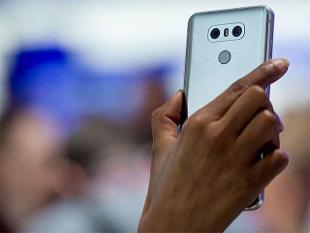India’s plans on levying import taxes on mobile phones
May 10, 2017 | Expert Insights

The Goods and Services Tax which is to be rolled out on 1st July will not only change the long existing tax system in India but also impose import taxes on mobile phones thereby causing worry among the World Trade Organisation manufacturing nations of China, U.S and EU.
Current Market scenario
India, with a population of 1.34 billion is the second largest market for smartphone giants like Samsung and Xiaomi. While brands like Apple, Motorola and Sony have found their niche among the high-end products, cheaper Chinese brands continue to grasp larger market shares. 40% of the market is controlled by China and OPPO’s plans on further investment reflects its ambitions to expand in India.
Due to the lag faced by Indian brands in the hyper competitive environment companies are now facing negative profits. Micromax, an Indian electronics company reported a sales drop of 16.7% month-over-month and in cases were profits have been reported, the company has imported most of the essential parts.
The Information Technology Agreement
The Information Technology Agreement (ITA) of World Trade Organisation, 1996 signed between 29 countries (now 82) led to the reduction or removal of trade barriers among the signatories for technological products. India’s refusal to take part in ITA 2 to discuss the inclusion of more developed products and its recent decision to impose import taxes on the same can be interpreted as a continuation of its protectionist policy.
Analysis
EU, China, Japan and U.S have demanded for an explanation from the Indian government on grounds that this is a violation of the ITA-1 of which India was a part. The levying of the Special Additional Tax of 2% on the import of Printed Circuit Boards (PCB) which accounts for 50% of the cost of the product has already paved the way for higher walls that the imports will need to cross. India however has taken a stand stating that it did not further the agreement or accept the inclusion of 200 newly developed products to the list, which was a part of ITA-2.
Assessment
The taxation will complement India’s new policy of Phase Manufacturing Policy (PMP) which provides tariff relief, other incentives and promotes indigenous production. However, by imposing a 2% tax on the circuit boards might not prove to be a desirable move for India is not yet ready to produce it in large amounts and will still have to import PMP’s. Facilitating Prime Minister Modis “make in India” campaign, the shift to domestic production is most likely to create more jobs over the next five-seven years. The talks with Apple regarding production of sub-parts of the goods in India will reduce its dependency on imports.
If the government is successful at providing proper connectivity, investment benefits and a more skilled workforce by initiating training programmes then India will be portraying itself as a beneficial ground for investment. However, given that India’s largest import from China is mobile phones and technological products, the resistance and the country’s inward looking policy might cost the two nations their trade relations.








Comments